The North Coast 500 is one of Scotland’s most spectacular road trips – you are going to love it.
However, the route is not without its challenges. Many first-time drivers on the NC500 underestimate the rather unique aspects of driving this iconic route.
To make things safer and smoother for everyone on the route, read this guide to find out my best North Coast 500 driving tips on:
More guides to the North Coast 500 >
- Planning your NC500 trip? check out my complete guide to the North Coast 500
- Try my 7 day North Coast 500 itinerary
- Want to be more sustainable? read my slow guide to the North Coast 500
- The best places on the North Coast 500 to see wildlife
Read on for my driving tips for the North Coast 500!
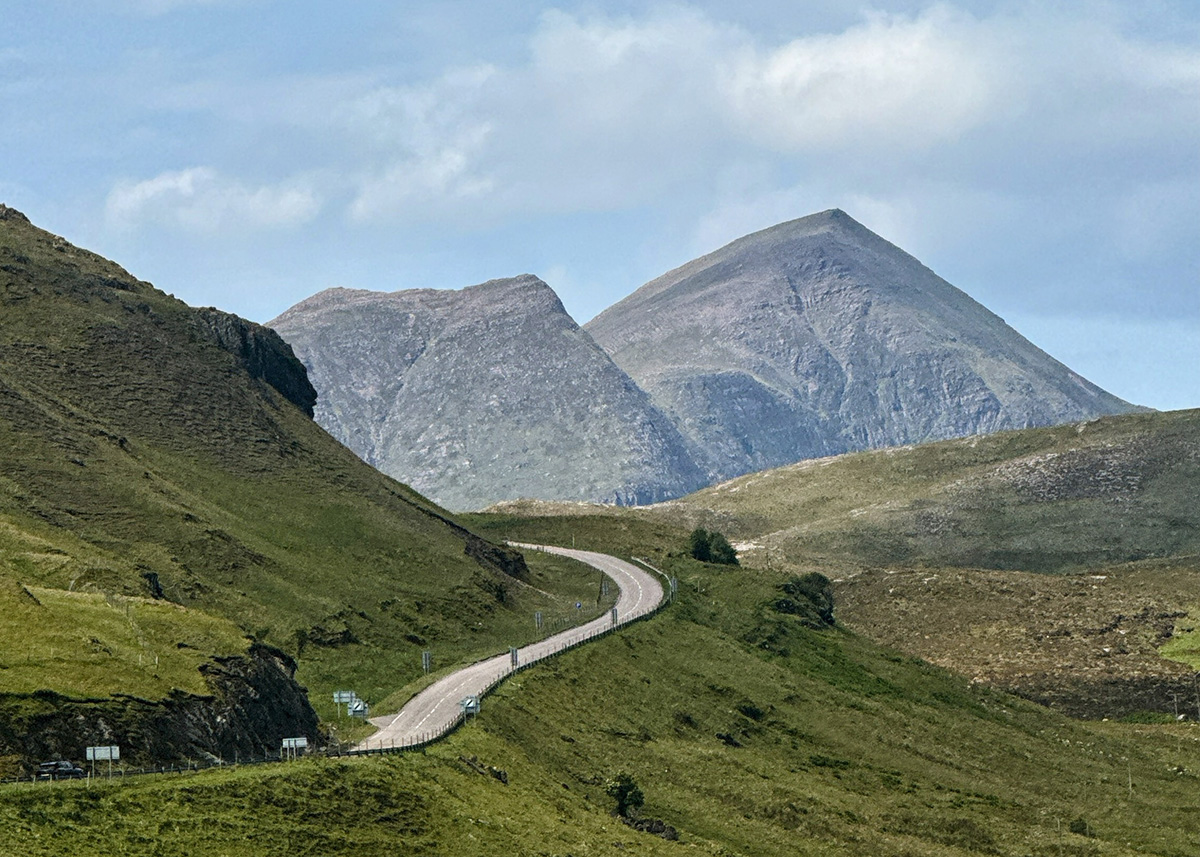
General driving tips for the North Coast 500
Driving in Scotland for the first time? Here are a few tips:
- Remember to KEEP LEFT – or you will cause an accident.
- Know the speed limits, road signs and read this general driving advice from Visit Scotland
- Remember the route is not just for you to enjoy your holiday – people use the roads as part of their daily life, so let people past.
- The drink drive limit in Scotland is very low – 50 mg of alcohol in 100 ml of blood – so you will need a designated driver.
- You have to wear a seatbelt – they are compulsory for all drivers and passengers
- You cannot use a handheld mobile phone whilst driving in Scotland, plug your phone into the car instead, but remember do not adjust the sat nav whilst driving.
- Watch out for hazards – campervans, delivery lorries and other large industrial vehicles, cyclists, walkers, horseriders, cows and sheep all use our roads.
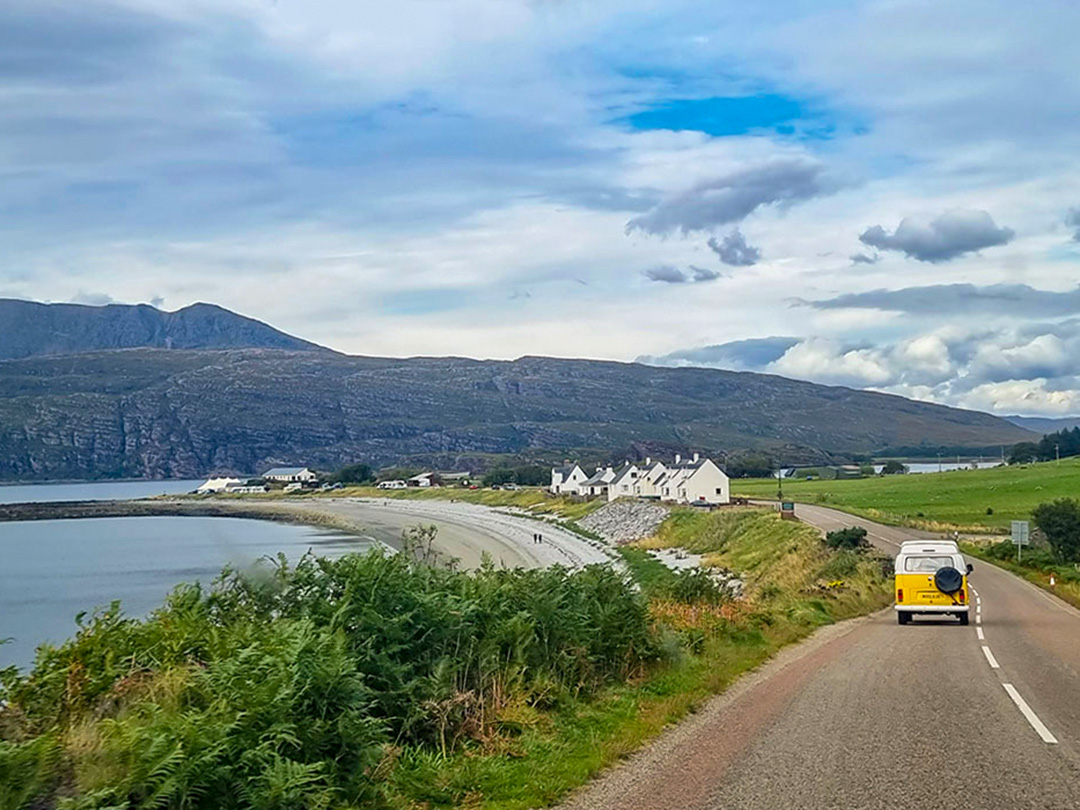
Where to find EV chargers and petrol stations on the North Coast 500
EV chargers and fuel stops (otherwise known as Petrol stations in Scotland) can be few and far between on certain stretches of the NC500, especially in Wester Ross, Assynt, and Sutherland.
Plan your fuel stops in advance and refuel whenever your tank drops below half.
Don’t assume all stations are 24-hour, many remote stations are independently run with seasonal hours. Always check fuel station reviews on Google Maps before depending on remote locations.
You can download my north coast petrol stations and EV chargers 500 map to your smartphone.
Click on the link via your phone and it will open in the google maps app so you can follow it. All the stops in this guide are marked on the map. You can also find EV chargers via https://chargeplacescotland.org/ and https://www.zap-map.com/
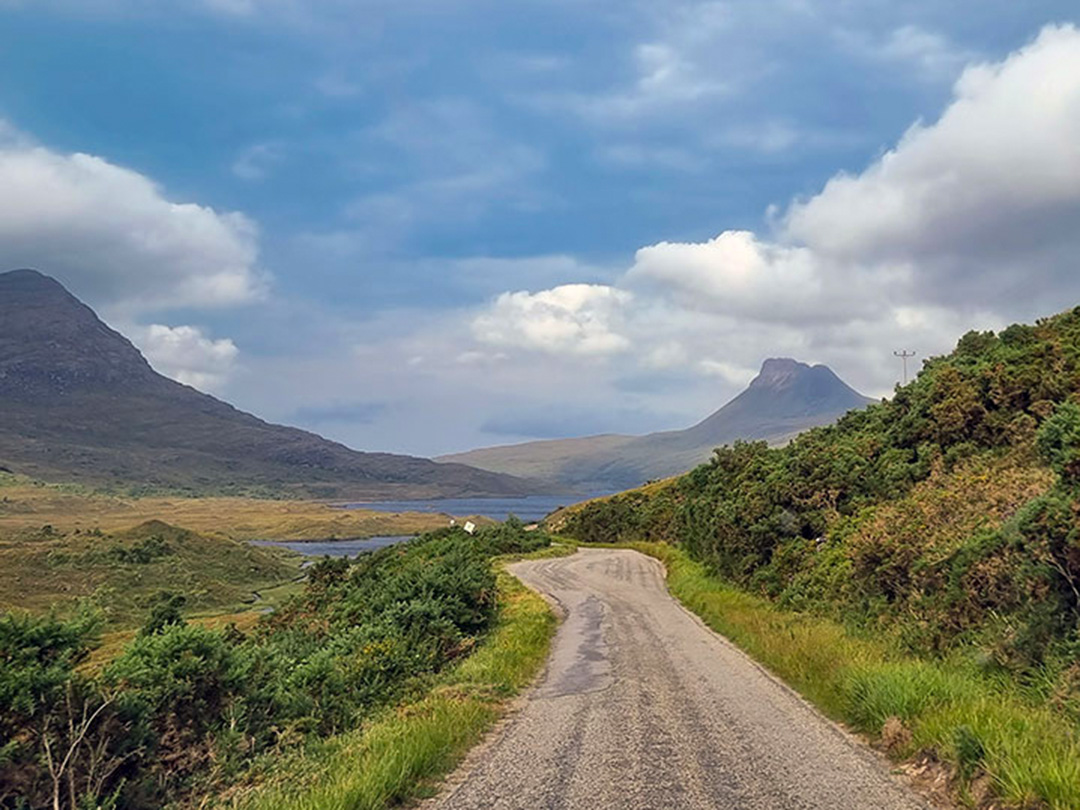
Using single-track roads on the NC500
Driving on single-track roads in Scotland can feel scary if you’ve never done it before. Many stretches of the NC500 are just one lane which require you to use passing places to allow oncoming traffic to pass.
> Watch this video on how to drive on a single track road!
Here are my tips for driving on single track roads and using passing places in Scotland.
Tips for using single track roads in Scotland
- Understand what passing places are – passing places are small lay-bys designed to let oncoming traffic pass or allow faster vehicles behind you to overtake. Pull in and let people pass, especially if you are driving very slowly.
- Never park in passing places – passing places must stay clear at all times. If you need to stop for a photo or a break, find a proper lay-by or designated parking area instead.
- Use passing places proactively – If you see an oncoming car in the distance, pull into the next passing place on your side of the road, don’t wait until the last second as this will mean one of you has to reverse.
- Be ready to reverse (calmly) – sometimes you’ll need to reverse into a passing place if you’re closer to one than the oncoming vehicle. Practice reversing before your trip — it’s a useful skill on single-track roads.
- Give priority to uphill traffic (or going around a bend) If you’re on a hill, give way to vehicles coming uphill, it’s easier for you to stop or reverse than it is for them.
- Be patient with campervans & large vehicles – Larger vehicles may need more space and time to maneuver. If you’re in a smaller vehicle, it’s usually easier for you to reverse or pull over.
- Watch for pedestrians, cyclists & wildlife – Single-track roads often have walkers, cyclists, or animals nearby. Drive slowly and stay alert, especially around blind corners and crests.
- Use your horn (when appropriate) – On very tight bends or blind summits, a gentle tap on the horn can warn any unseen oncoming vehicles of your presence.
- Thank other drivers – A simple wave or head nod is customary and polite when someone gives way for you
Most of the NC500 route is on single-track roads – and you will be driving the route along with sports cars, campervans, motorbikes, cyclists, tractors, delivery drivers, sheep, coos and deer.
Driving on the left: tips for international visitors
If you’re used to driving on the right, switching to the left side of the road can feel intimidating at first. Roundabouts, junctions, and narrow rural lanes require extra attention. Here are my top tips for driving on the left.
- Rent an automatic car if possible, it allows you to focus fully on road positioning rather than gear changes. Many rental companies in Scotland offer automatics. Book early, as they’re in high demand.
- In the UK, the driver sits on the right side of the car. This naturally positions you closer to the centre line of the road. Use this as your queue and make sure you don’t drift over the centre line.
- Think left, but look right first — that’s where traffic is coming from. Roundabouts run clockwise — yield to traffic coming from the right.
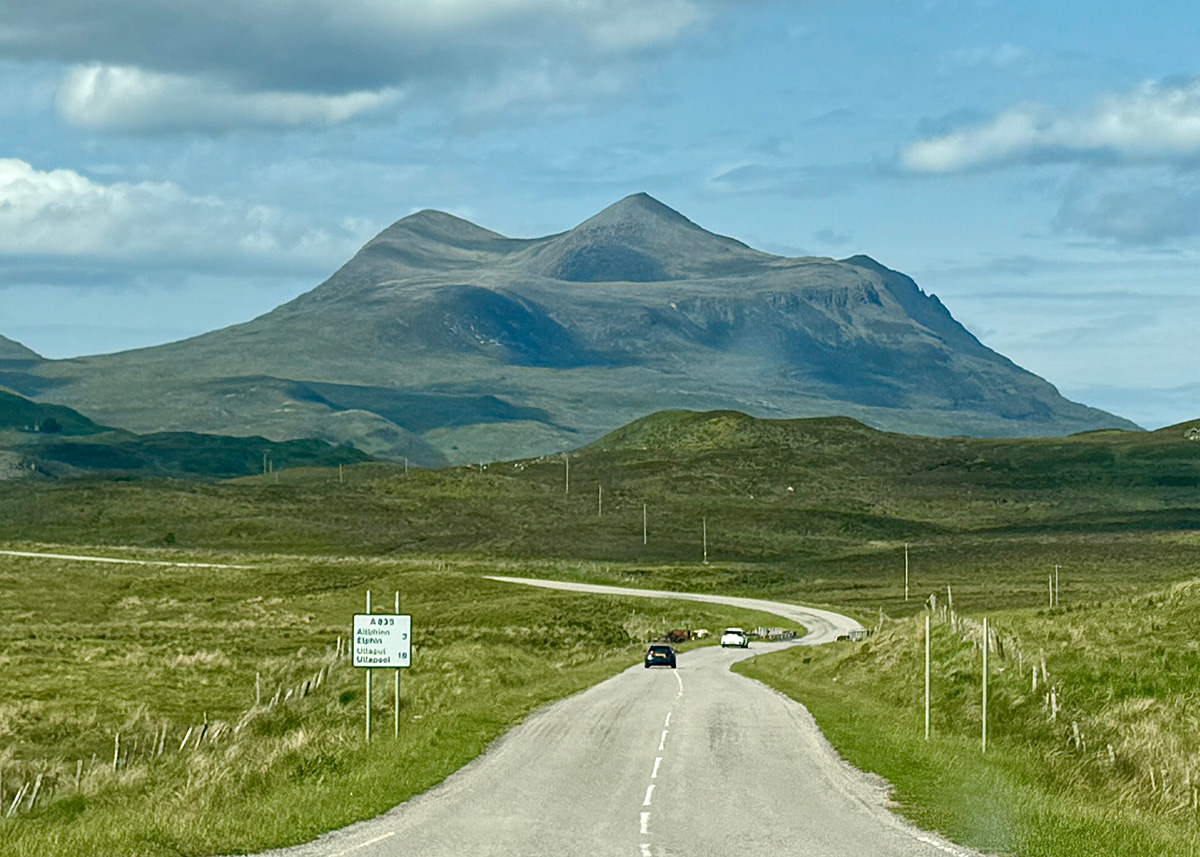
Handling poor mobile phone signal
Many parts of the NC500 have limited or no mobile reception, making online maps unreliable.
Download offline maps (Google Maps offline, GPX files, or Ordnance Survey maps). Don’t rely on streaming services or live navigation – prepare in advance.
It is always worth carrying a printed backup or guide book.
Check out these recommended guidebooks for your road trip! [affiliate links]
- Charles Tait’s North Coast 500
- The Rough Guide to the North Coast 500
- The North Coast 500 map
A car charger and portable power bank are also essential.
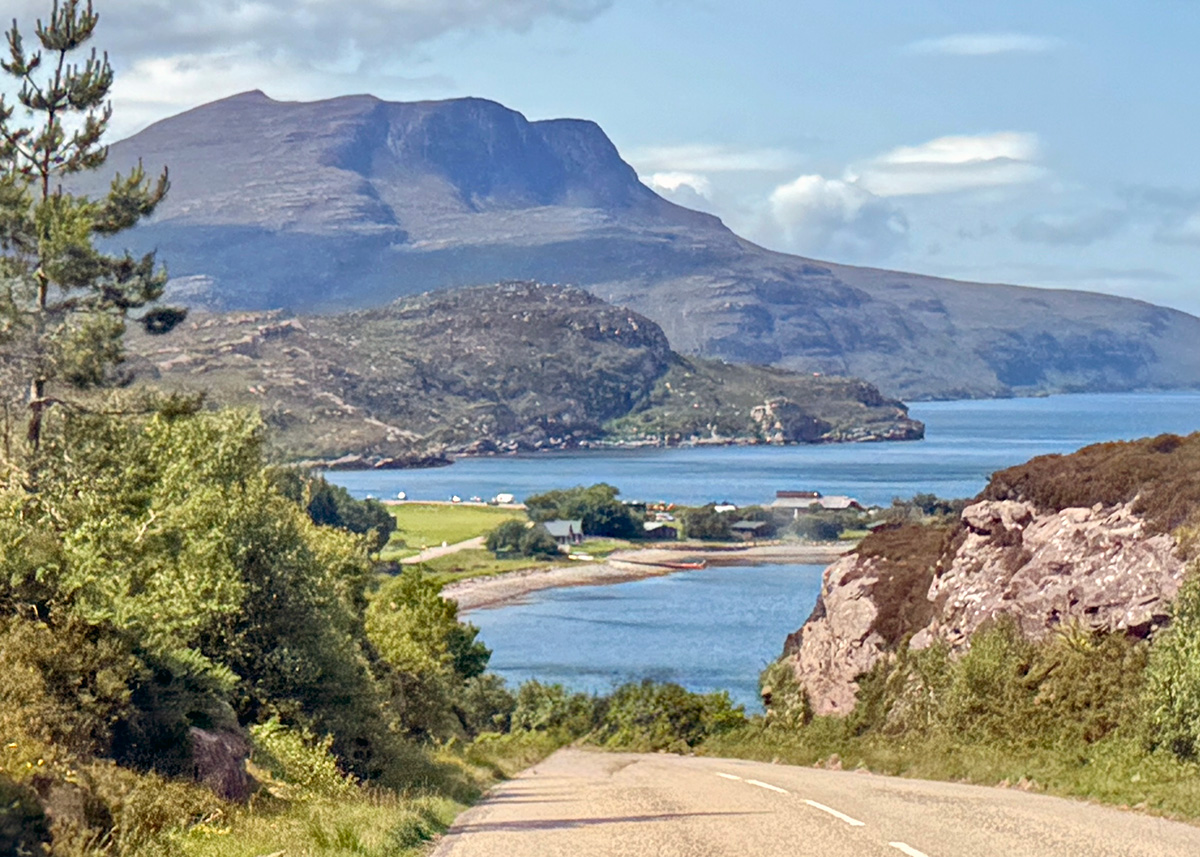
Understanding the real NC500 driving times
Many drivers underestimate how long it takes to drive each section of the NC500.
Narrow roads, photo stops, sheep crossings, and tourist traffic (especially campervans going 40 miles an hour or refusing to let traffic pass) all slow progress.
Plan to cover fewer miles per day than you would on a typical road trip, around 100-150 miles max.
> Why not plan a slow trip around the North Coast 500?
Sharing the road with campervans and large vehicles
Large campervans are a common sight on the NC500, especially in summer, or you might be think of hiring one.
Narrow roads can be stressful for inexperienced campervan drivers which means they often travel much slower than other vehicles.
If you are planning on hiring a campervan, remember to passing places to let people pass you. If you’re unsure about driving a large vehicle, consider a smaller rental car.
Avoiding wildlife collisions
You will regularly find sheep on the road along the NC500 and in the evenings, deer can cross unexpectedly.
Drive cautiously during low-light hours, and slow down in rural areas. Always stay alert for animals near the roadside.
Should I drive the NC500 clockwise or anti-clockwise?
I would suggest going anti-clockwise. Start at Inverness Castle and travel first up the East coast to John o’Groats, across to Durness, down to Gairloch and finally Applecross taking in some of Scotland’s most spectacular coastal scenery along the way.
> read more: a 7 day itinerary for the North Coast 500
Love from Scotland x
